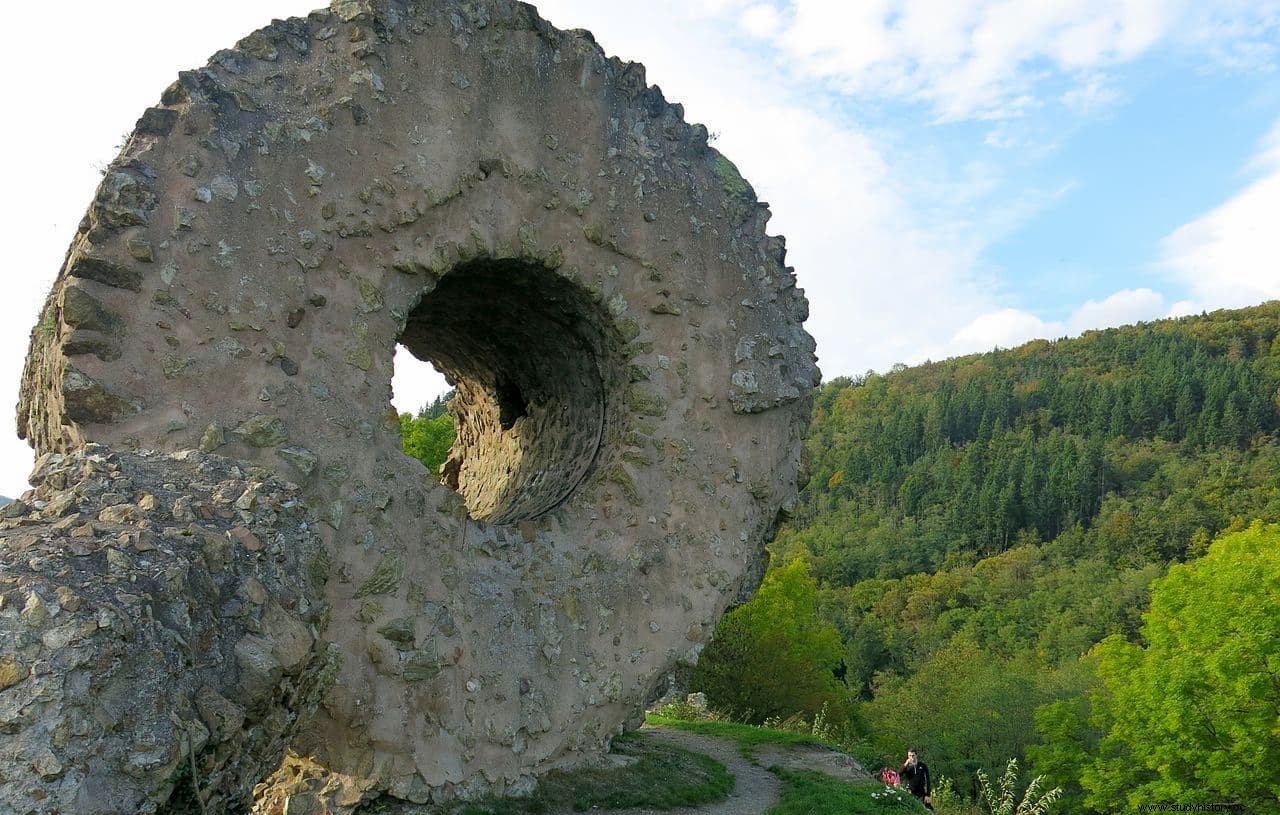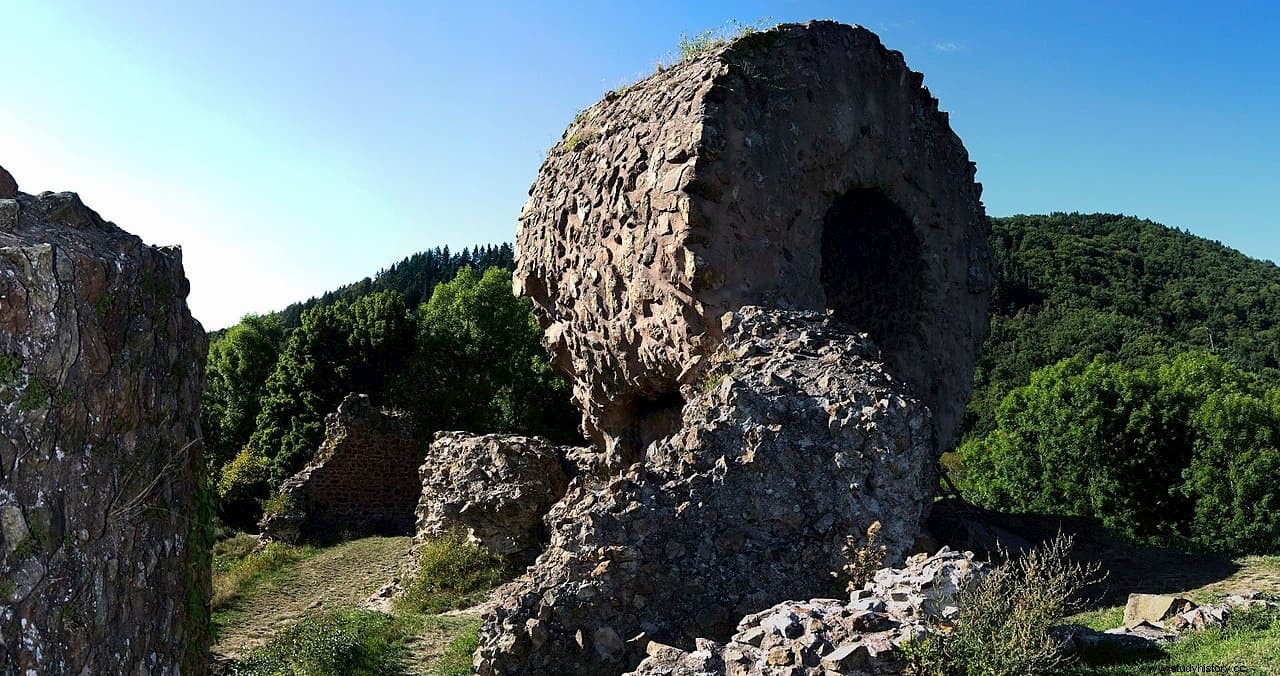The ruins of the castle of Engelbourg are located on a rocky peak at an altitude of 445 meters near the town of Thann, in the Alsace region. Travelers who approach the place are surprised by the presence of an imposing circular mass with a hole in the center, which is visible from several kilometers away.
The castle was built by the counts of Pfirt (in French Ferrette) between 1220 and 1230. However, a century later the last of the counts died without issue or heir, so in 1324 the entire county, including the castle, passed to the Habsburg family for the marriage of Duke Albert II of Austria with Juana de Pfirt.
The Habsburgs used the castle, not as an occasional residence, but as an object of exchange and guarantee, alternately handing it over to different borrowers. So in 1449 it was offered to Charles the Bold, Duke of Burgundy, as a pledge for the 50,000 guilders lent. As they were never returned in 1470 Charles officially took over the building. Of course, before the Habsburgs took everything that could be quickly dismantled:furniture, windows, doors, and even hinges and locks.

Unbelievably, seven years later it returned to Habsburg property, and remained so until the Thirty Years' War broke out in 1618. The Swedes and French took it several times throughout the war, until the latter took it for good.
With the end of the war and the peace treaty of Westphalia in 1648, France recovered Alsace, moving the border to the East, with which the castle lost its strategic importance. So in February 1673 Louis XIV ordered the dismantling and total destruction of the fortress, in case one day the tables were turned and the place became a threat to France again.
The matter was entrusted to the intendant Mathias Poncet de la Rivière, who hired miners from the nearby town of Giromagny, who were mostly of Saxon, Bavarian and Tyrolean origin, to carry out the blasting.

The work lasted between May and September 1673, and it took up to three attempts to demolish the huge homage tower, which had a diameter of 7.5 meters and walls 2.5 meters thick.
Finally the tower tipped to one side, crashing down and breaking into several pieces. The shortest of all of them, about 4 meters high, remained intact in a vertical position, resembling a large eye that dominates the entire valley, and which is known as the eye of the witch or the enchantress .
During the following centuries the castle was used as a quarry by the surrounding inhabitants, who found in its stones a good material to build or rebuild their houses. Since 1898 it has been considered a historical monument in France.
